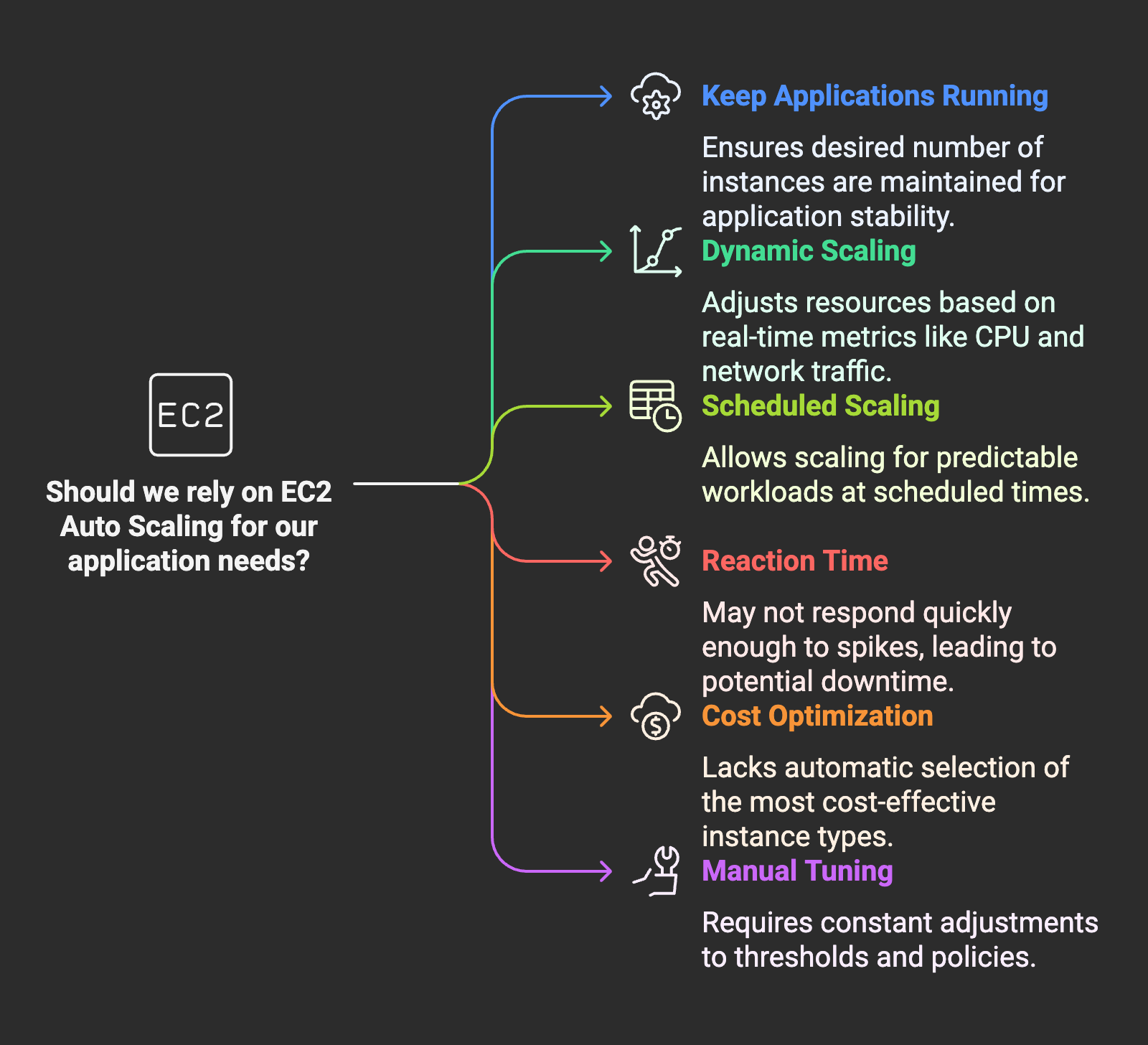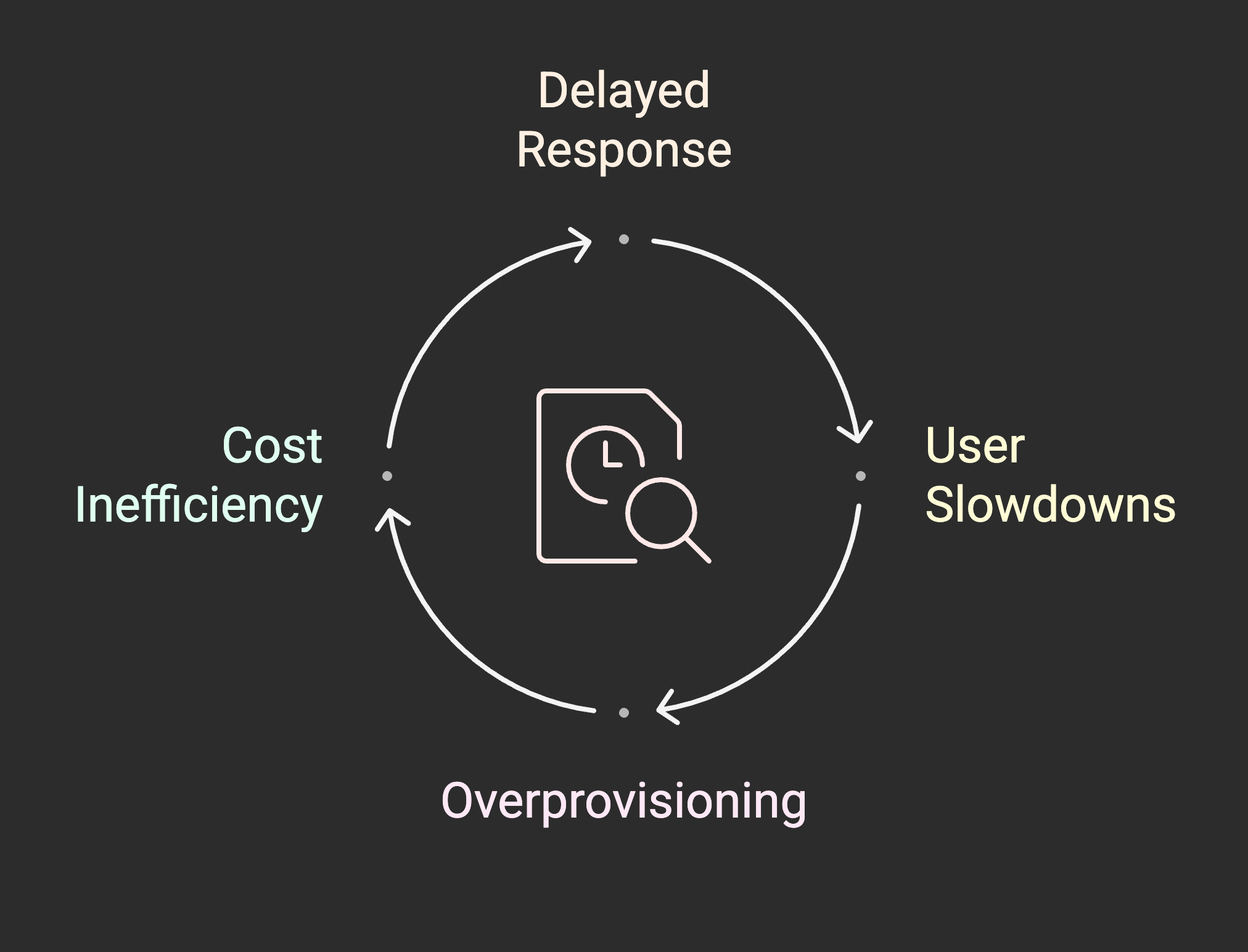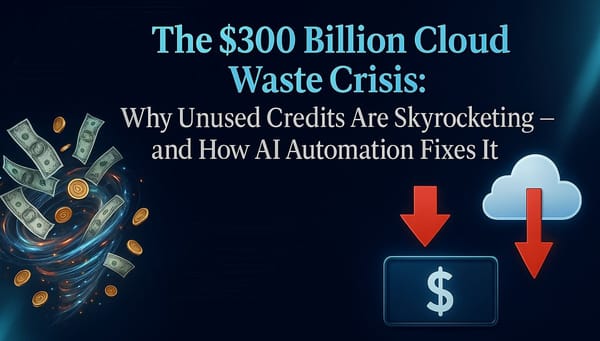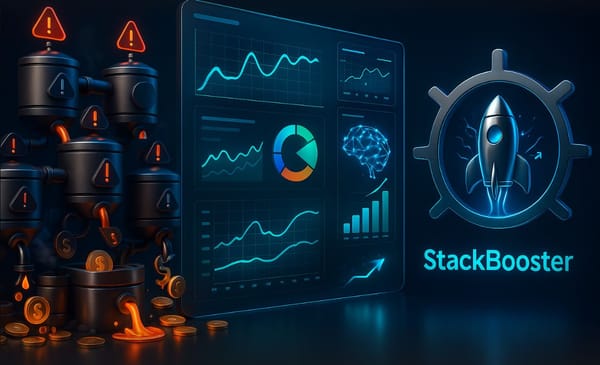AWS Autoscaling: What Works, What Doesn’t, and Where It’s Headed

The Scaling Illusion: Why "Auto" Doesn’t Always Mean "Optimized"
AWS Autoscaling promises a dream scenario - your infrastructure scales up and down automatically, ensuring optimal performance without breaking the bank. Sounds great, right? In theory, yes. In reality, many companies end up overpaying, underutilizing, or playing an endless game of manual tuning.
So what’s the problem? AWS-native tools like EC2 Auto Scaling, Elastic Load Balancing (ELB), and AWS Fargate work, but only within their limits. They react to changes, rather than anticipating them. And that delay? It’s costly - both in dollars and performance.
Let’s break down where AWS autoscaling shines, where it fails, and why AI-driven autoscaling is emerging as the smarter alternative.
What AWS Autoscaling Gets Right
AWS does a lot of things well. Their autoscaling tools are no exception - if used correctly.

1. EC2 Auto Scaling: The Workhorse
✅ Keeps applications running by maintaining the desired number of EC2 instances.
✅ Scales dynamically based on CPU utilization, network traffic, and other metrics.
✅ Supports scheduled scaling for predictable workloads.
Where It Fails:
❌ Too slow - reacts after a spike, not before.
❌ No built-in cost optimization - doesn’t pick the cheapest instance types dynamically.
❌ Manual tuning required - thresholds and policies need constant tweaking.
2. Elastic Load Balancing (ELB): The Traffic Cop
✅ Efficiently distributes traffic across multiple instances.
✅ Supports multiple balancing algorithms (round robin, least connections, etc.).
✅ Works well with EC2 Auto Scaling.
Where It Fails:
❌ Doesn’t predict demand shifts - it just redistributes existing traffic.
❌ Doesn’t scale resources - only directs traffic to them.
❌ Struggles with sudden spikes - traffic surges can still overload instances.
3. AWS Fargate: Serverless Scaling for Containers
✅ Removes the need for instance provisioning.
✅ Scales containers dynamically without user intervention.
✅ Great for microservices architectures.
Where It Fails:
❌ Expensive - often costs more than managing EC2 instances directly.
❌ Still reactive - scales up only after usage increases.
❌ Limited infrastructure control - less flexibility than EC2-based autoscaling.
The Big Problem: Reactive Scaling Wastes Money and Performance
AWS autoscaling tools wait for something to happen before reacting. That’s too late.
1. By the time an instance scales up, users might have already experienced slowdowns.
2. Overprovisioning happens all the time to compensate for slow autoscaling. Companies pay for extra resources just to avoid performance dips.
3. No cost intelligence - AWS Auto Scaling won’t automatically pick the cheapest instances or adjust across Spot, On-Demand, and Reserved Instances based on market conditions.
At scale, this inefficiency bleeds money.

AI-Driven Autoscaling: The Smarter Way to Scale
The next evolution of autoscaling? AI-powered systems that predict and optimize scaling before issues arise.
How AI-Driven Autoscaling Works
Unlike AWS-native autoscaling, which reacts to spikes after they happen, AI-driven autoscaling solutions like Stackbooster work proactively.
✅ Predicts demand before it happens - analyzing usage patterns to adjust resources in advance.
✅ Selects the most cost-effective instances dynamically - balancing Spot, On-Demand, and Reserved Instances.
✅ Shuts down unused resources immediately - eliminating overprovisioning waste.
✅ Optimizes workload placement continuously - ensuring peak efficiency.
Why Stackbooster Is a Game-Changer
Most companies use a mix of manual tuning and AWS-native autoscaling, which is inefficient and costly. Stackbooster flips the script:
✔️ Forecasts demand surges before they happen - keeping apps smooth even during traffic spikes.
✔️ Cuts AWS costs by 30-60% - by dynamically selecting the lowest-cost infrastructure.
✔️ Eliminates wasted compute power - turning off idle resources in real time.
✔️ Removes the need for constant manual tuning - so DevOps teams can focus on bigger things.
The Future of Cloud Scaling: Smarter, Not Just Bigger
AWS-native autoscaling tools aren’t useless - they’re just outdated. Scaling infrastructure isn’t just about adding more servers when traffic increases. It’s about doing it intelligently so you don’t pay for unnecessary resources.
AI-driven autoscaling isn’t just a nice-to-have - it’s the difference between spending smart and burning cash.
If you’re still manually tweaking autoscaling policies or relying on AWS’s default settings, it’s time to rethink your approach.
💡 Want to cut AWS costs without sacrificing performance? Let’s talk about how AI-driven autoscaling changes the game.





